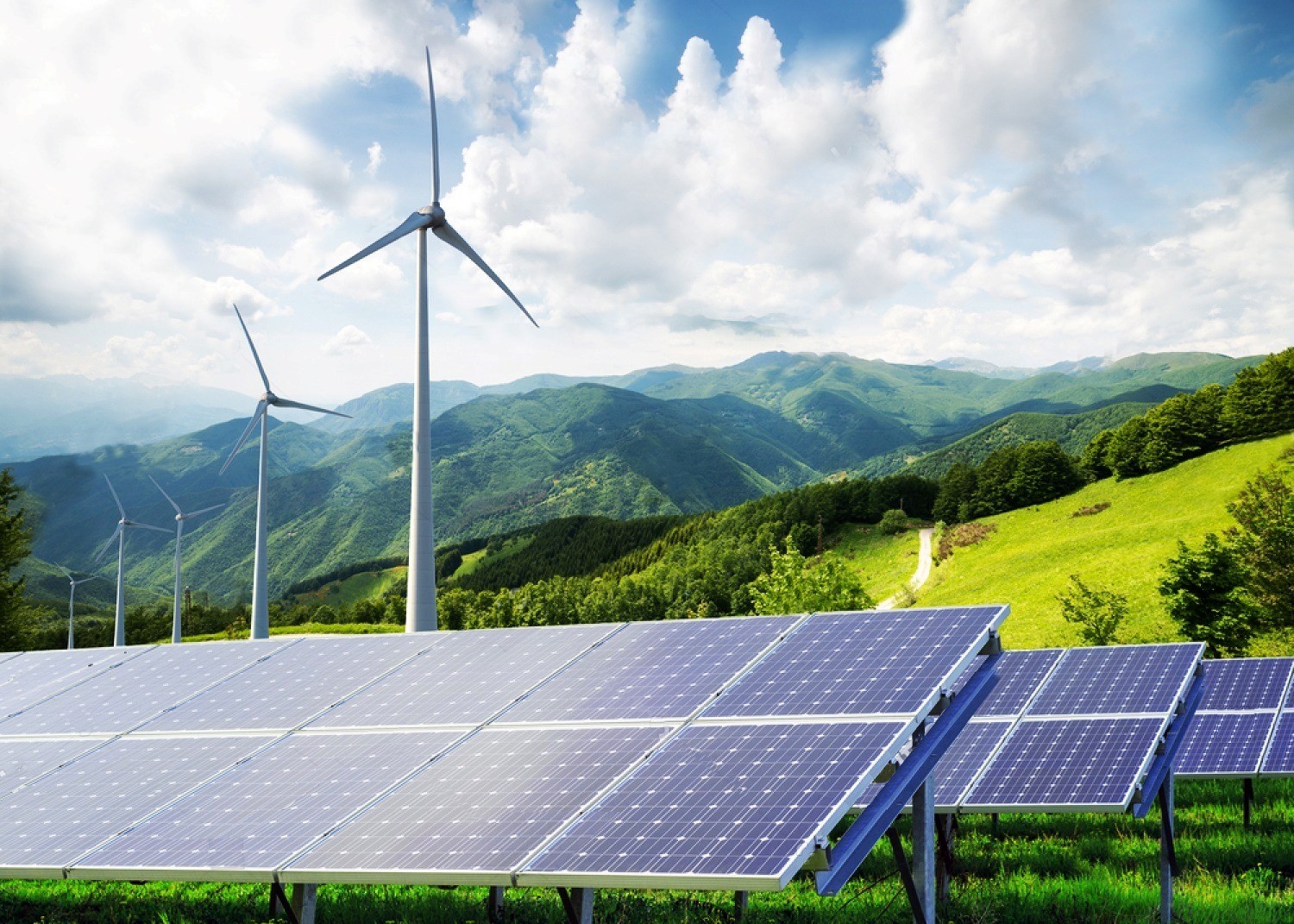As a leading global investor in renewable energy development, Esla Asset Solutions(EAS) is dedicated to advancing the global energy transition. Our team is focused on investing in decarbonization opportunities within our infrastructure sector.
Esla Asset Solutions has solidified its reputation as a global leader in infrastructure investment. With a portfolio valued at over $46.5 billion and a workforce of approximately 30,000 experienced employees, the company, along with its subsidiaries and strategic partners, operates state-of-the-art facilities worldwide. These assets span multiple sectors, including factories, airports, railways, and mining operations, highlighting the company’s expansive influence and unwavering commitment to operational excellence.
EAS’s success is built on its ability to harness the capabilities of its subsidiaries and partners to maintain and operate these facilities at high-efficiency levels. Each project benefits from a collaborative approach that integrates the latest technologies and industry best practices, ensuring optimized operations for both performance and sustainability.
Read more on our commitment to sustainabilityA cornerstone of our strategy is its unwavering dedication to environmental stewardship. EAS and its partners have been pioneers in adopting environmentally friendly methods in the construction and operation of its global infrastructure projects. This commitment is evident in our efforts to implement sustainable practices across all sectors.
In the construction of factories, the company employs green building techniques that reduce energy consumption and minimize waste. These factories are equipped with advanced energy management systems that optimize energy use and integrate renewable energy sources, such as solar and wind power. The company also emphasizes the use of sustainable materials and construction methods that have a lower environmental impact.
Airports developed by EAS are designed with sustainability in mind, featuring energy-efficient lighting, heating, and cooling systems. These facilities also incorporate water-saving technologies and waste reduction programs to further minimize their environmental footprint. Additionally, EAS works closely with airlines and other stakeholders to implement sustainable aviation practices, such as optimizing flight paths to reduce fuel consumption and emissions.
Our railway projects are another testament to its commitment to sustainability. By investing in electric and hybrid trains, we reduce reliance on fossil fuels and lowers greenhouse gas emissions. Railway stations and infrastructure are designed to be energy-efficient, incorporating renewable energy sources and sustainable construction practices. These efforts not only contribute to a cleaner environment but also enhance the overall efficiency and reliability of rail transport.
In the mining sector, EAS and its partners have introduced innovative practices to mitigate the environmental impact of mining operations. This includes the use of advanced technologies for resource extraction and processing that minimize energy use and emissions. We also prioritize land reclamation and rehabilitation, ensuring that mining sites are restored to their natural state or repurposed for other sustainable uses after operations have ceased.
Central to our environmental strategy is its goal to achieve net zero emissions by 2050. This ambitious target reflects the company’s long-term vision for sustainability and its role as a responsible global leader. To achieve this goal, EAS and its subsidiaries continuously assess their operations to identify opportunities for reducing emissions. This includes investing in energy-efficient technologies, increasing the use of renewable energy, and implementing carbon offset programs.
Our approach to sustainability is holistic, encompassing every aspect of its operations. By leveraging cutting-edge technologies such as the Internet of Things (IoT), artificial intelligence (AI), and big data analytics, the company can monitor and optimize the performance of its facilities in real-time. These smart systems enable predictive maintenance, reduce energy consumption, and enhance overall operational efficiency, contributing to the company’s sustainability goals.
EAS Leadership in global infrastructure investment is underscored by its extensive global network of relationships, strategic vision, operational excellence, and unwavering commitment to sustainability. With a significant amount of our investments in infrastructure, EAS, along with its subsidiaries and partners, continues to set new benchmarks in the industry. By spearheading the adoption of environmentally friendly methods and striving for net zero emissions by 2050, the company is not only advancing its business objectives but also making a significant contribution to the global fight against climate change. As it continues to expand and enhance its infrastructure projects worldwide, EAS remains a beacon of innovation and a model for responsible and sustainable investment.
EAS has established itself as a leader in sustainable industrial practices, setting a high standard in the construction and operation of factories. By integrating forward-thinking sustainability protocols, the company not only enhances environmental stewardship but also drives economic growth and fosters strong governmental relationships. This case study explores how EAS commitment to green building techniques and advanced energy management systems has benefited its partner factories, bolstered revenue, and contributed to more productive economies while promoting a greener future.
EAS has established itself as a leader in In its factory constructions, EAS employs a comprehensive set of green building techniques that significantly impact both environmental and economic outcomes:
Energy Efficiency and Waste Reduction: EAS factories are designed to minimize energy consumption and waste. This is achieved through the implementation of advanced energy management systems that monitor and optimize energy use. These systems are integrated with renewable energy sources such as solar and wind power, reducing dependency on non-renewable energy and lowering operational costs.
Use of Sustainable Materials: The company prioritizes the use of sustainable materials and construction methods. By selecting materials with a lower environmental impact and employing construction techniques that reduce resource consumption, EAS ensures that its factories have a smaller ecological footprint.
Integration of Renewable Energy: Each factory is equipped with systems to harness renewable energy. Solar panels and wind turbines are strategically installed to provide a significant portion of the factory’s energy needs, which not only cuts energy costs but also reduces greenhouse gas emissions.
The implementation of these sustainability protocols has led to several economic benefits for EAS partner factories:
Reduced Operating Costs: By using energy-efficient systems and renewable energy, factories experience a marked decrease in their energy expenses. The initial investment in these technologies is offset by the long-term savings on utility bills, enhancing overall profitability
Attraction of Green Investments: The emphasis on sustainability has made these factories attractive to investors who prioritize environmental responsibility. This influx of green investment capital boosts revenue and supports expansion projects.
Enhanced Market Positioning: Factories that adopt green building techniques often enjoy a competitive advantage in the marketplace. Being recognized as a leader in sustainability helps these factories differentiate themselves from competitors, attracting environmentally-conscious consumers and clients.
Esla Asset Solutions' commitment to sustainability has also led to the development of strong ties with governments:
Alignment with Government Policies: Many governments are implementing policies and incentives aimed at reducing carbon emissions and promoting sustainable practices. EAS factories, which align with these policies, benefit from subsidies, tax breaks, and other government incentives designed to support green initiatives.
Collaborative Projects: The company’s proactive approach in promoting sustainability often leads to collaborative projects with government agencies. These partnerships can result in joint ventures for renewable energy projects or community development programs, further enhancing economic productivity.
Economic Contributions: By establishing factories that adhere to high sustainability standards, EAS contributes to the local economy through job creation and community development. Governments recognize these contributions as beneficial to overall economic growth and productivity.
Esla Asset Solutions’ forward-thinking sustainability protocols not only enhance factory operations but also contribute to a greener future:
Reduction in Carbon Footprint: The integration of renewable energy sources and sustainable materials helps reduce the carbon footprint of the factories, supporting global efforts to combat climate change.
Promotion of Sustainable Practices: By setting an example in green building techniques, EAS encourages other companies to adopt similar practices, amplifying the impact of its sustainability efforts across the industry.
Long-term Environmental Benefits: The use of energy-efficient systems and sustainable materials leads to a reduction in waste and resource depletion, contributing to the preservation of natural resources for future generations.

Esla Asset Solutions’ dedication to sustainability has proven to be a significant driver of economic and environmental benefits. By employing green building techniques, advanced energy management systems, and sustainable materials, the company has not only enhanced the revenue and operational efficiency of its partner factories but also forged strong relationships with governments. This holistic approach positions EAS as a leader in fostering productive economies and promoting a greener future.

For more information, please visit our FAQs , Contact Us or Download our ESG policy